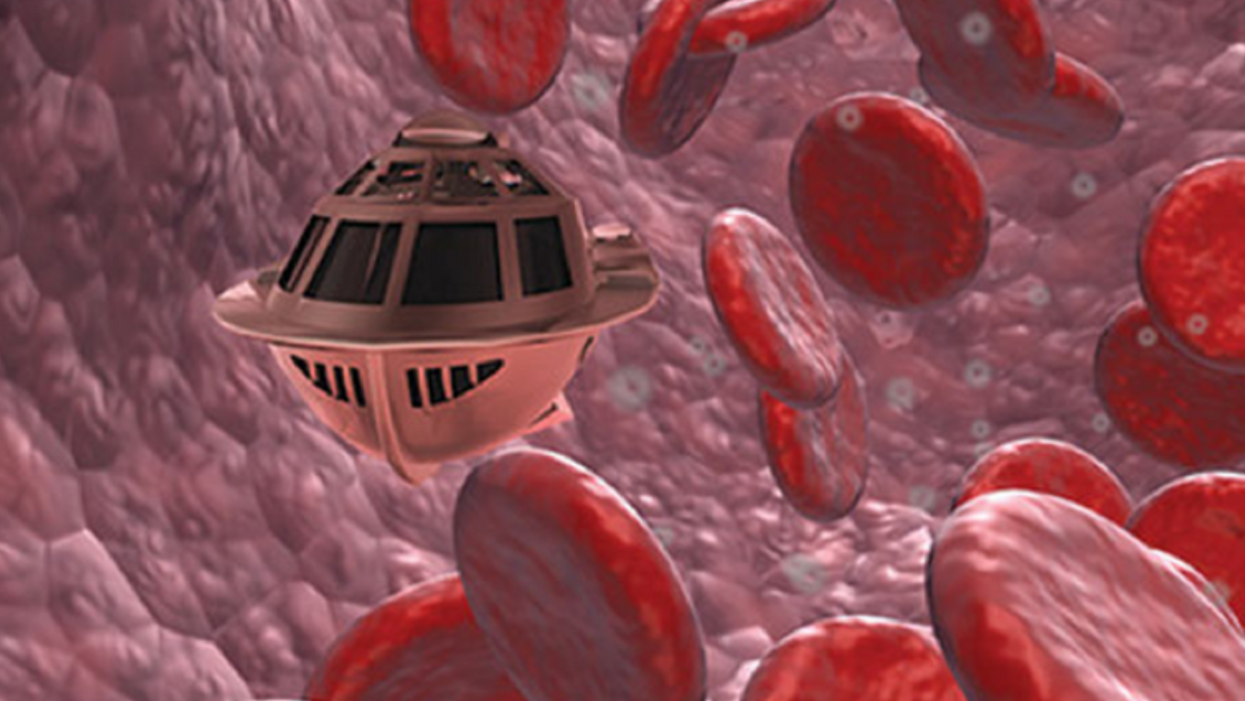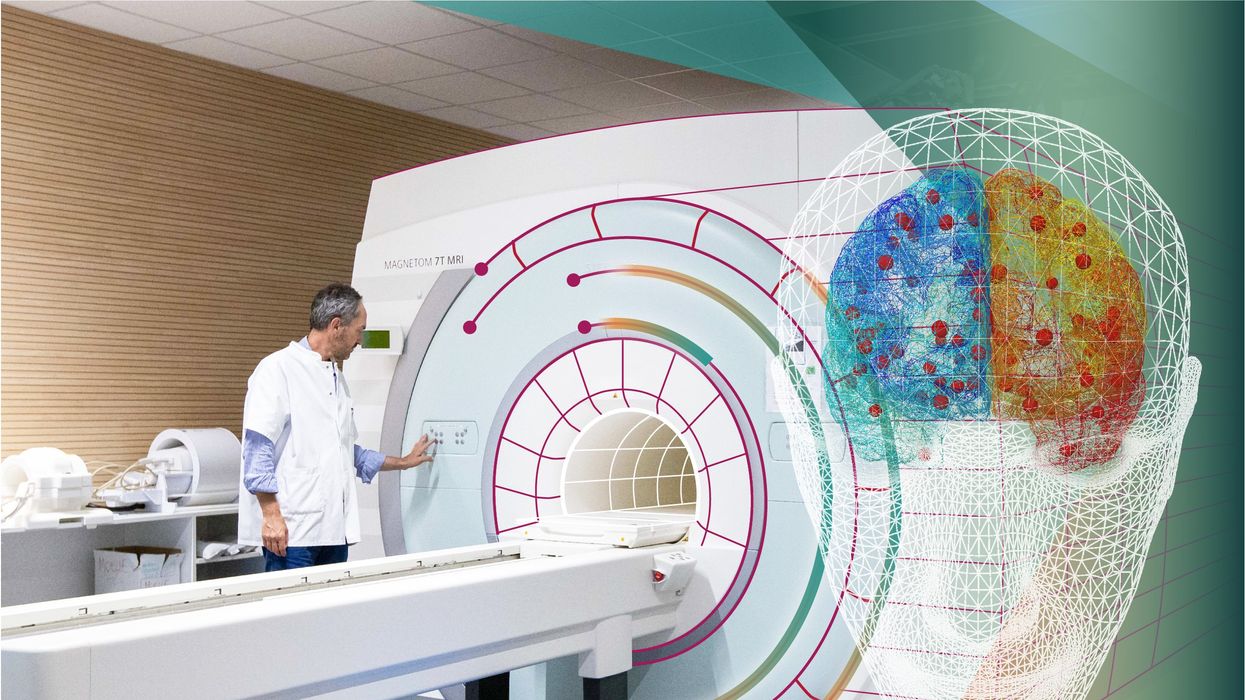Why we don’t have more COVID-19 vaccines for animals

COVID-19 vaccines for humans number 30, while only three vaccines are available for animals, even though many species have been infected.
Responding to COVID-19 outbreaks at more than 200 mink farms, the Danish government, in November 2020, culled its entire mink population. The Danish armed forces helped farmers slaughter each of their 17 million minks, which are normally farmed for their valuable fur.
The SARS-CoV-2 virus, said officials, spread from human handlers to the small, ferret-like animals, mutated, and then spread back to several hundred humans. Although the mass extermination faced much criticism, Denmark’s prime minister defended the decision last month, stating that the step was “necessary” and that the Danish government had “a responsibility for the health of the entire world.”
Over the past two and half years, COVID-19 infections have been reported in numerous animal species around the world. In addition to the Danish minks, there is other evidence that the virus can mutate as it’s transmitted back and forth between humans and animals, which increases the risk to public health. According to the World Health Organisation (WHO), COVID-19 vaccines for animals may protect the infected species and prevent the transmission of viral mutations. However, the development of such vaccines has been slow. Scientists attribute the deficiency to a lack of data.
“Several animal species have been predicted and found to be susceptible to SARS-CoV-2,” says Suresh V. Kuchipudi, interim director of the Animal Diagnostic Laboratory at the Huck Institutes of Life Sciences. But the risk remains unknown for many animals in several parts of the world, he says. “Therefore, there is an urgent need to monitor the SARS-CoV-2 exposure of high-risk animals in different parts of the world.”
In June, India introduced Ancovax, its first COVID-19 vaccine for animals. The development came a year after the nation reported that the virus had infected eight Asiatic lions, with two of them dying. While 30 COVID-19 vaccines for humans have been approved for general or emergency use across the world, Ancovax is only the third such vaccine for animals. The first, named Carnivac-Cov, was registered by Russia in March last year, followed by another vaccine four months later, developed by Zoetis, a U.S. pharmaceutical company.
Christina Lood, a Zoetis spokesperson, says the company has donated over 26,000 doses of its animal vaccine to over 200 zoos – in addition to 20 conservatories, sanctuaries and other animal organizations located in over a dozen countries, including Canada, Chile and the U.S. The vaccine, she adds, has been administered to more than 300 mammalian species so far.
“At least 75 percent of emerging infectious diseases have an animal origin, including COVID-19,” says Lood. “Now more than ever before, we can all see the important connection between animal health and human health."
The Dangers of COVID-19 Infections among Animals
Cases of the virus in animals have been reported in several countries across the world. As of March this year, 29 kinds of animals have been infected. These include pet animals like dogs, cats, ferrets and hamsters; farmed animals like minks; wild animals like the white-tailed deer, mule deer and black-tailed marmoset; and animals in zoos and sanctuaries, including hyenas, hippopotamuses and manatees. Despite the widespread infection, the U.S. Centres for Diseases Control and Prevention (CDC) has noted that “we don’t yet know all of the animals that can get infected,” adding that more studies and surveillance are needed to understand how the virus is spread between humans and animals.
Leyi Wang, a veterinary virologist at the Veterinary Diagnostic Laboratory, University of Illinois, says that captive and pet animals most often get infected by humans. It goes both ways, he says, citing a recent study in Hong Kong that found the virus spread from pet hamsters to people.
Wang’s bigger concern is the possibility that humans or domestic animals could transmit the virus back to wildlife, creating an uncontrollable reservoir of the disease, especially given the difficulty of vaccinating non-captive wild animals. Such spillbacks have happened previously with diseases such as plague, yellow-fever, and rabies.
It’s challenging and expensive to develop and implement animal vaccines, and demand has been lacking as the broader health risk for animals isn’t well known among the public. People tend to think only about their house pets.
In the past, other human respiratory viruses have proven fatal for endangered great apes like chimpanzees and gorillas. Fearing that COVID-19 could have the same effect, primatologists have been working to protect primates throughout the pandemic. Meanwhile, virus reservoirs have already been created among other animals, Wang says. “Deer of over 20 U.S. states were tested SARS-CoV-2 positive,” says Wang, pointing to a study that confirmed human-to-deer transmission as well as deer-to-deer transmission. It remains unclear how many wildlife species may be susceptible to the disease due to interaction with infected deer, says Wang.
In April, the CDC expressed concerns over new coronavirus variants mutating in wildlife, urging health authorities to monitor the spread of the contagion in animals as threats to humans. The WHO has made similar recommendations.
Challenges to Vaccine Development
Zoetis initiated development activities for its COVID-19 vaccine in February 2020 when the first known infection of a dog occurred in Hong Kong. The pharmaceutical giant completed the initial development work and studies on dogs and cats, and shared their findings at the World One Health Congress in the fall of 2020. A few months later, after a troop of eight gorillas contracted the virus at the San Diego Zoo Safari Park, Zoetis donated its experimental vaccine for emergency use in the great ape population.
Zoetis has uniquely formulated its COVID-19 vaccine for animals. It uses the same antigen as human vaccines, but it includes a different type of carrier protein for inducing a strong immune response. “The unique combination of antigen and carrier ensures safety and efficacy for the species in which a vaccine is used,” says Lood.
But it’s challenging and expensive to develop and implement animal vaccines, and demand has been lacking as the broader health risk for animals isn’t well known among the public. People tend to think only about their house pets. “As it became apparent that risk of severe disease for household pets such as cats and dogs was low, demand for those vaccines decreased before they became commercially available,” says William Karesh, executive vice-president for health and policy at EcoHealth Alliance. He adds that in affected commercial mink farms, the utility of a vaccine could justify the cost in some cases.
Although scientists have made tremendous advances in making vaccines for animals, Kuchipudi thinks that the need for COVID-19 vaccines for animals “must be evaluated based on many factors, including the susceptibility of the particular animal species, health implications, and cost.”.
Not every scientist feels the need for animal vaccines. Joel Baines, a professor of virology at Cornell University’s Baker Institute for Animal Health, says that while domestic cats are the most susceptible to COVID-19, they usually suffer mild infections. Big cats in zoos are vulnerable, but they can be isolated or distanced from humans. He says that mink farms are a relatively small industry and, by ensuring that human handlers are COVID negative, such outbreaks can be curtailed.
Baines also suggests that human vaccines could probably work in animals, as they were tested in animals during early clinical trials and induced immune responses. “However, these vaccines should be used in humans as a priority and it would be unethical to use a vaccine meant for humans to vaccinate an animal if vaccine doses are at all limiting,” he says.
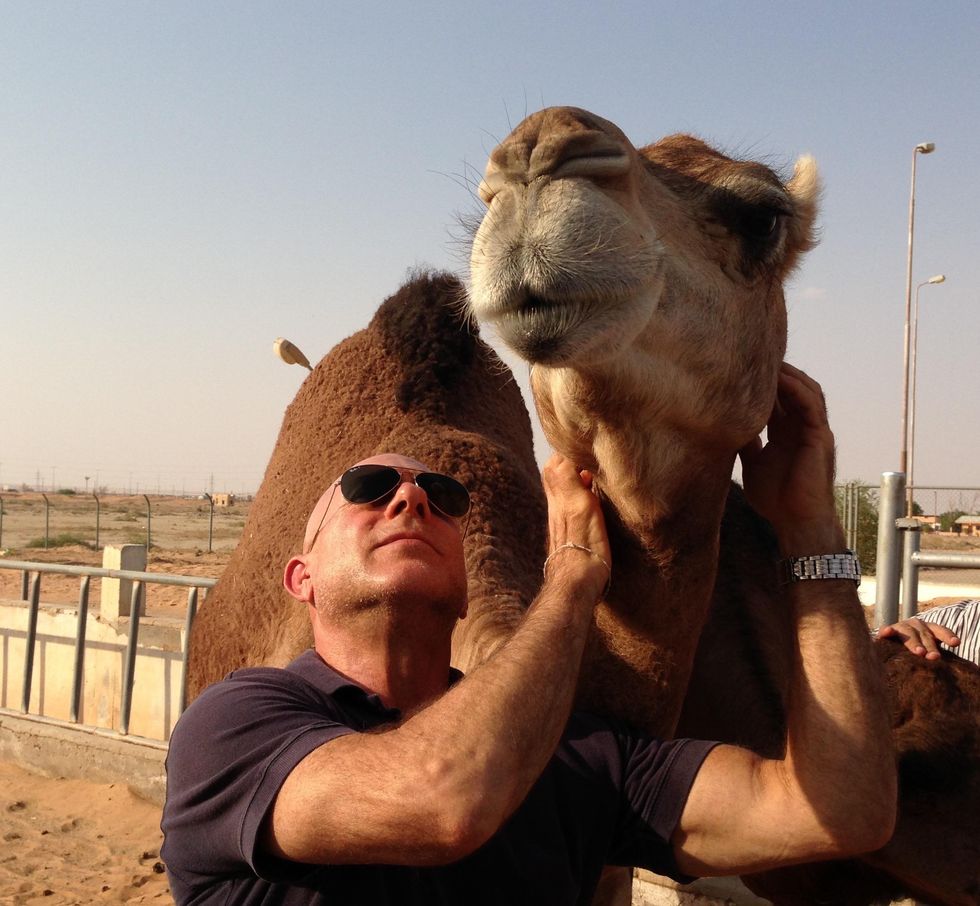
William Karesh, president of the World Animal Health Organization Working Group on Wildlife Diseases, says the best way to protect animals is to reduce their exposure to infected people.
William Karesh
In the absence of enough vaccines, Karesh says that the best way to protect animals is the same as protecting unvaccinated humans - reduce their exposure to infected people by isolating them when necessary. “People working with or spending time with wild animals should follow available guidelines, which includes testing themselves and wearing PPE to avoid accidentally infecting wildlife,” he says.
The Link between Animal and Human Health
Although there is a need for animal vaccines in response to virus outbreaks, the best approach is to try to prevent the outbreaks in the first place, explains K. Srinath Reddy, president of the Public Health Foundation of India. He says that the incidence of zoonotic diseases has increased in the past six decades because human actions like increased deforestation, wildlife trade and animal meat consumption have opened an ecological window for disease transmission between humans and animals. Such actions chip away at the natural barriers between humans and forest-dwelling viruses, while building conveyor belts for the transmission of zoonotic diseases like COVID-19.
Many studies suggest that the source of COVID-19 was infected live animals sold at a wet market in China’s Wuhan. The market sold live dogs, rats, porcupines, badgers, hares, foxes, hedgehogs, marmots and Chinese muntjac (small deer) and, according to a study published in July, the virus was found on the market’s stalls, animal cages, carts and water drains.
This research strongly suggests that COVID-19 is a zoonotic disease, one that jumps from animals to humans due to our close relationship with them in agriculture, as companions and in the natural environment. Half of the infectious diseases that affect people come from animals, but the study of zoonotic diseases has been historically underfunded, even as they can reduce the likelihood and cost of future pandemics.
“We need to invest in vaccines,” says Reddy, “but that cannot be a substitute for an ecologically sensible approach to curtailing zoonotic diseases.”
A movie still from the 1966 film "Fantastic Voyage"
In the 1966 movie "Fantastic Voyage," actress Raquel Welch and her submarine were shrunk to the size of a cell in order to eliminate a blood clot in a scientist's brain. Now, 55 years later, the scenario is becoming closer to reality.
California-based startup Bionaut Labs has developed a nanobot about the size of a grain of rice that's designed to transport medication to the exact location in the body where it's needed. If you think about it, the conventional way to deliver medicine makes little sense: A painkiller affects the entire body instead of just the arm that's hurting, and chemotherapy is flushed through all the veins instead of precisely targeting the tumor.
"Chemotherapy is delivered systemically," Bionaut-founder and CEO Michael Shpigelmacher says. "Often only a small percentage arrives at the location where it is actually needed."
But what if it was possible to send a tiny robot through the body to attack a tumor or deliver a drug at exactly the right location?
Several startups and academic institutes worldwide are working to develop such a solution but Bionaut Labs seems the furthest along in advancing its invention. "You can think of the Bionaut as a tiny screw that moves through the veins as if steered by an invisible screwdriver until it arrives at the tumor," Shpigelmacher explains. Via Zoom, he shares the screen of an X-ray machine in his Culver City lab to demonstrate how the half-transparent, yellowish device winds its way along the spine in the body. The nanobot contains a tiny but powerful magnet. The "invisible screwdriver" is an external magnetic field that rotates that magnet inside the device and gets it to move and change directions.
The current model has a diameter of less than a millimeter. Shpigelmacher's engineers could build the miniature vehicle even smaller but the current size has the advantage of being big enough to see with bare eyes. It can also deliver more medicine than a tinier version. In the Zoom demonstration, the micorobot is injected into the spine, not unlike an epidural, and pulled along the spine through an outside magnet until the Bionaut reaches the brainstem. Depending which organ it needs to reach, it could be inserted elsewhere, for instance through a catheter.
"The hope is that we can develop a vehicle to transport medication deep into the body," says Max Planck scientist Tian Qiu.
Imagine moving a screw through a steak with a magnet — that's essentially how the device works. But of course, the Bionaut is considerably different from an ordinary screw: "At the right location, we give a magnetic signal, and it unloads its medicine package," Shpigelmacher says.
To start, Bionaut Labs wants to use its device to treat Parkinson's disease and brain stem gliomas, a type of cancer that largely affects children and teenagers. About 300 to 400 young people a year are diagnosed with this type of tumor. Radiation and brain surgery risk damaging sensitive brain tissue, and chemotherapy often doesn't work. Most children with these tumors live less than 18 months. A nanobot delivering targeted chemotherapy could be a gamechanger. "These patients really don't have any other hope," Shpigelmacher says.
Of course, the main challenge of the developing such a device is guaranteeing that it's safe. Because tissue is so sensitive, any mistake could risk disastrous results. In recent years, Bionaut has tested its technology in dozens of healthy sheep and pigs with no major adverse effects. Sheep make a good stand-in for humans because their brains and spines are similar to ours.
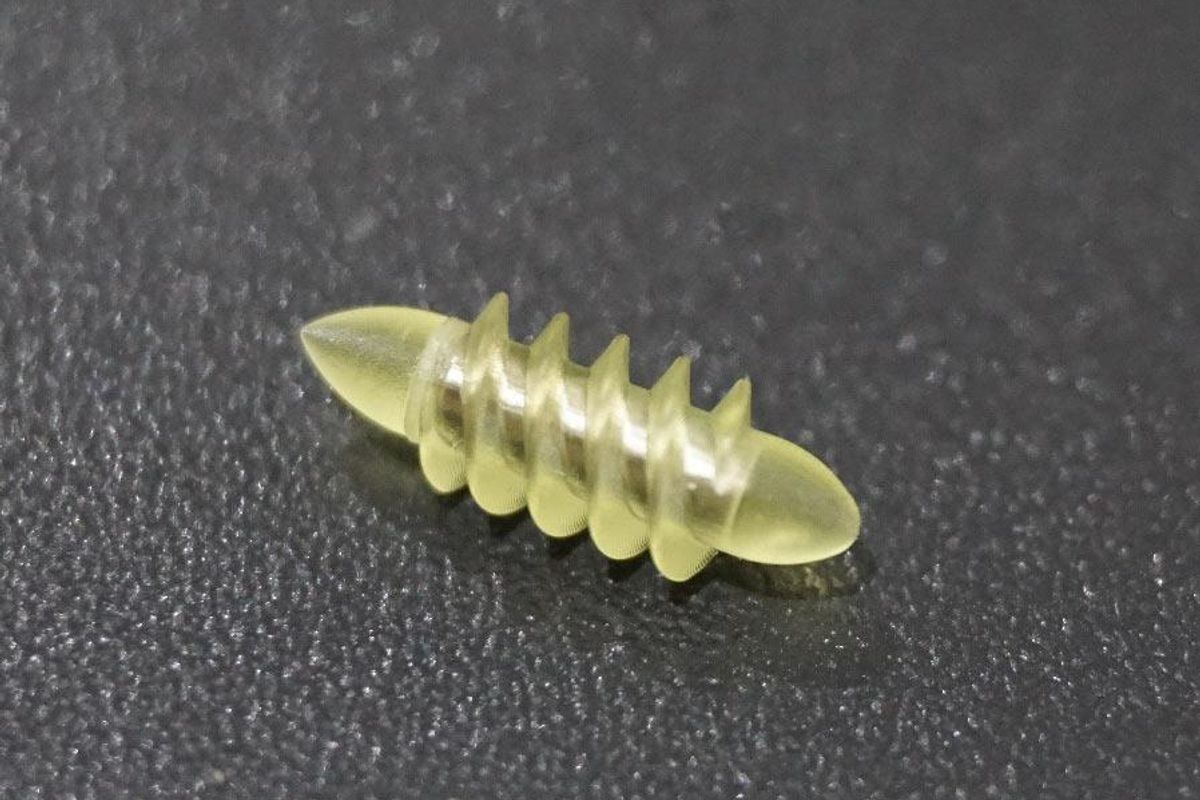
The Bionaut device is about the size of a grain of rice.
Bionaut Labs
"As the Bionaut moves through brain tissue, it creates a transient track that heals within a few weeks," Shpigelmacher says. The company is hoping to be the first to test a nanobot in humans. In December 2022, it announced that a recent round of funding drew $43.2 million, for a total of 63.2 million, enabling more research and, if all goes smoothly, human clinical trials by early next year.
Once the technique has been perfected, further applications could include addressing other kinds of brain disorders that are considered incurable now, such as Alzheimer's or Huntington's disease. "Microrobots could serve as a bridgehead, opening the gateway to the brain and facilitating precise access of deep brain structure – either to deliver medication, take cell samples or stimulate specific brain regions," Shpigelmacher says.
Robot-assisted hybrid surgery with artificial intelligence is already used in state-of-the-art surgery centers, and many medical experts believe that nanorobotics will be the instrument of the future. In 2016, three scientists were awarded the Nobel Prize in Chemistry for their development of "the world's smallest machines," nano "elevators" and minuscule motors. Since then, the scientific experiments have progressed to the point where applicable devices are moving closer to actually being implemented.
Bionaut's technology was initially developed by a research team lead by Peer Fischer, head of the independent Micro Nano and Molecular Systems Lab at the Max Planck Institute for Intelligent Systems in Stuttgart, Germany. Fischer is considered a pioneer in the research of nano systems, which he began at Harvard University more than a decade ago. He and his team are advising Bionaut Labs and have licensed their technology to the company.
"The hope is that we can develop a vehicle to transport medication deep into the body," says Max Planck scientist Tian Qiu, who leads the cooperation with Bionaut Labs. He agrees with Shpigelmacher that the Bionaut's size is perfect for transporting medication loads and is researching potential applications for even smaller nanorobots, especially in the eye, where the tissue is extremely sensitive. "Nanorobots can sneak through very fine tissue without causing damage."
In "Fantastic Voyage," Raquel Welch's adventures inside the body of a dissident scientist let her swim through his veins into his brain, but her shrunken miniature submarine is attacked by antibodies; she has to flee through the nerves into the scientist's eye where she escapes into freedom on a tear drop. In reality, the exit in the lab is much more mundane. The Bionaut simply leaves the body through the same port where it entered. But apart from the dramatization, the "Fantastic Voyage" was almost prophetic, or, as Shpigelmacher says, "Science fiction becomes science reality."
This article was first published by Leaps.org on April 12, 2021.
How the Human Brain Project Built a Mind of its Own
In 2013, the Human Brain Project set out to build a realistic computer model of the brain over ten years. Now, experts are reflecting on HBP's achievements with an eye toward the future.
In 2009, neuroscientist Henry Markram gave an ambitious TED talk. “Our mission is to build a detailed, realistic computer model of the human brain,” he said, naming three reasons for this unmatched feat of engineering. One was because understanding the human brain was essential to get along in society. Another was because experimenting on animal brains could only get scientists so far in understanding the human ones. Third, medicines for mental disorders weren’t good enough. “There are two billion people on the planet that are affected by mental disorders, and the drugs that are used today are largely empirical,” Markram said. “I think that we can come up with very concrete solutions on how to treat disorders.”
Markram's arguments were very persuasive. In 2013, the European Commission launched the Human Brain Project, or HBP, as part of its Future and Emerging Technologies program. Viewed as Europe’s chance to try to win the “brain race” between the U.S., China, Japan, and other countries, the project received about a billion euros in funding with the goal to simulate the entire human brain on a supercomputer, or in silico, by 2023.
Now, after 10 years of dedicated neuroscience research, the HBP is coming to an end. As its many critics warned, it did not manage to build an entire human brain in silico. Instead, it achieved a multifaceted array of different goals, some of them unexpected.
Scholars have found that the project did help advance neuroscience more than some detractors initially expected, specifically in the area of brain simulations and virtual models. Using an interdisciplinary approach of combining technology, such as AI and digital simulations, with neuroscience, the HBP worked to gain a deeper understanding of the human brain’s complicated structure and functions, which in some cases led to novel treatments for brain disorders. Lastly, through online platforms, the HBP spearheaded a previously unmatched level of global neuroscience collaborations.
Simulating a human brain stirs up controversy
Right from the start, the project was plagued with controversy and condemnation. One of its prominent critics was Yves Fregnac, a professor in cognitive science at the Polytechnic Institute of Paris and research director at the French National Centre for Scientific Research. Fregnac argued in numerous articles that the HBP was overfunded based on proposals with unrealistic goals. “This new way of over-selling scientific targets, deeply aligned with what modern society expects from mega-sciences in the broad sense (big investment, big return), has been observed on several occasions in different scientific sub-fields,” he wrote in one of his articles, “before invading the field of brain sciences and neuromarketing.”
"A human brain model can simulate an experiment a million times for many different conditions, but the actual human experiment can be performed only once or a few times," said Viktor Jirsa, a professor at Aix-Marseille University.
Responding to such critiques, the HBP worked to restructure the effort in its early days with new leadership, organization, and goals that were more flexible and attainable. “The HBP got a more versatile, pluralistic approach,” said Viktor Jirsa, a professor at Aix-Marseille University and one of the HBP lead scientists. He believes that these changes fixed at least some of HBP’s issues. “The project has been on a very productive and scientifically fruitful course since then.”
After restructuring, the HBP became a European hub on brain research, with hundreds of scientists joining its growing network. The HBP created projects focused on various brain topics, from consciousness to neurodegenerative diseases. HBP scientists worked on complex subjects, such as mapping out the brain, combining neuroscience and robotics, and experimenting with neuromorphic computing, a computational technique inspired by the human brain structure and function—to name just a few.
Simulations advance knowledge and treatment options
In 2013, it seemed that bringing neuroscience into a digital age would be farfetched, but research within the HBP has made this achievable. The virtual maps and simulations various HBP teams create through brain imaging data make it easier for neuroscientists to understand brain developments and functions. The teams publish these models on the HBP’s EBRAINS online platform—one of the first to offer access to such data to neuroscientists worldwide via an open-source online site. “This digital infrastructure is backed by high-performance computers, with large datasets and various computational tools,” said Lucy Xiaolu Wang, an assistant professor in the Resource Economics Department at the University of Massachusetts Amherst, who studies the economics of the HBP. That means it can be used in place of many different types of human experimentation.
Jirsa’s team is one of many within the project that works on virtual brain models and brain simulations. Compiling patient data, Jirsa and his team can create digital simulations of different brain activities—and repeat these experiments many times, which isn’t often possible in surgeries on real brains. “A human brain model can simulate an experiment a million times for many different conditions,” Jirsa explained, “but the actual human experiment can be performed only once or a few times.” Using simulations also saves scientists and doctors time and money when looking at ways to diagnose and treat patients with brain disorders.
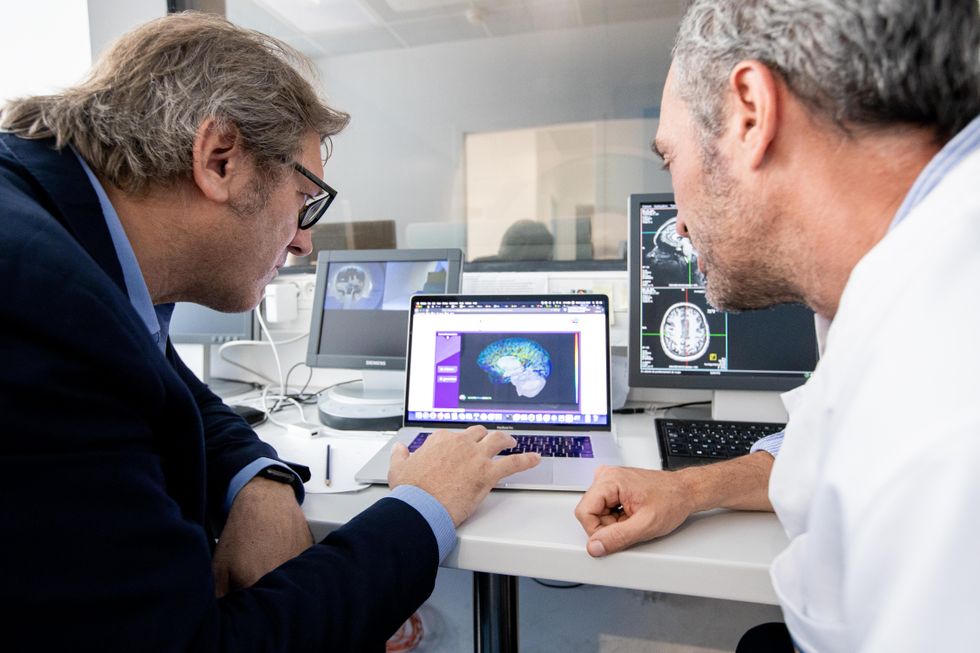
Compiling patient data, scientists can create digital simulations of different brain activities—and repeat these experiments many times.
The Human Brain Project
Simulations can help scientists get a full picture that otherwise is unattainable. “Another benefit is data completion,” added Jirsa, “in which incomplete data can be complemented by the model. In clinical settings, we can often measure only certain brain areas, but when linked to the brain model, we can enlarge the range of accessible brain regions and make better diagnostic predictions.”
With time, Jirsa’s team was able to move into patient-specific simulations. “We advanced from generic brain models to the ability to use a specific patient’s brain data, from measurements like MRI and others, to create individualized predictive models and simulations,” Jirsa explained. He and his team are working on this personalization technique to treat patients with epilepsy. According to the World Health Organization, about 50 million people worldwide suffer from epilepsy, a disorder that causes recurring seizures. While some epilepsy causes are known others remain an enigma, and many are hard to treat. For some patients whose epilepsy doesn’t respond to medications, removing part of the brain where seizures occur may be the only option. Understanding where in the patients’ brains seizures arise can give scientists a better idea of how to treat them and whether to use surgery versus medications.
“We apply such personalized models…to precisely identify where in a patient’s brain seizures emerge,” Jirsa explained. “This guides individual surgery decisions for patients for which surgery is the only treatment option.” He credits the HBP for the opportunity to develop this novel approach. “The personalization of our epilepsy models was only made possible by the Human Brain Project, in which all the necessary tools have been developed. Without the HBP, the technology would not be in clinical trials today.”
Personalized simulations can significantly advance treatments, predict the outcome of specific medical procedures and optimize them before actually treating patients. Jirsa is watching this happen firsthand in his ongoing research. “Our technology for creating personalized brain models is now used in a large clinical trial for epilepsy, funded by the French state, where we collaborate with clinicians in hospitals,” he explained. “We have also founded a spinoff company called VB Tech (Virtual Brain Technologies) to commercialize our personalized brain model technology and make it available to all patients.”
The Human Brain Project created a level of interconnectedness within the neuroscience research community that never existed before—a network not unlike the brain’s own.
Other experts believe it’s too soon to tell whether brain simulations could change epilepsy treatments. “The life cycle of developing treatments applicable to patients often runs over a decade,” Wang stated. “It is still too early to draw a clear link between HBP’s various project areas with patient care.” However, she admits that some studies built on the HBP-collected knowledge are already showing promise. “Researchers have used neuroscientific atlases and computational tools to develop activity-specific stimulation programs that enabled paraplegic patients to move again in a small-size clinical trial,” Wang said. Another intriguing study looked at simulations of Alzheimer’s in the brain to understand how it evolves over time.
Some challenges remain hard to overcome even with computer simulations. “The major challenge has always been the parameter explosion, which means that many different model parameters can lead to the same result,” Jirsa explained. An example of this parameter explosion could be two different types of neurodegenerative conditions, such as Parkinson’s and Huntington’s diseases. Both afflict the same area of the brain, the basal ganglia, which can affect movement, but are caused by two different underlying mechanisms. “We face the same situation in the living brain, in which a large range of diverse mechanisms can produce the same behavior,” Jirsa said. The simulations still have to overcome the same challenge.
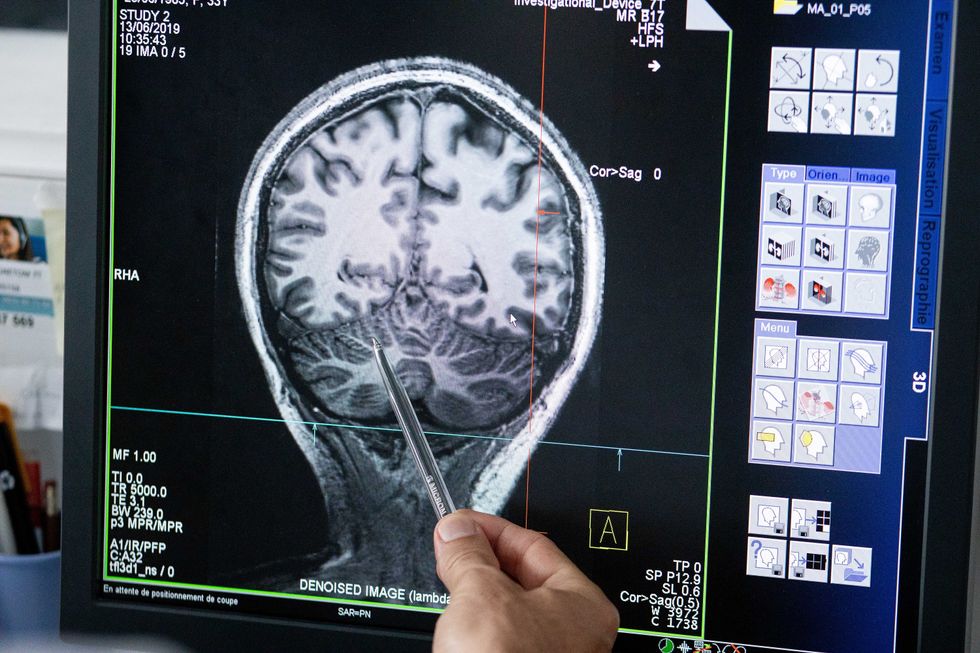
Understanding where in the patients’ brains seizures arise can give scientists a better idea of how to treat them and whether to use surgery versus medications.
The Human Brain Project
A network not unlike the brain’s own
Though the HBP will be closing this year, its legacy continues in various studies, spin-off companies, and its online platform, EBRAINS. “The HBP is one of the earliest brain initiatives in the world, and the 10-year long-term goal has united many researchers to collaborate on brain sciences with advanced computational tools,” Wang said. “Beyond the many research articles and projects collaborated on during the HBP, the online neuroscience research infrastructure EBRAINS will be left as a legacy even after the project ends.”
Those who worked within the HBP see the end of this project as the next step in neuroscience research. “Neuroscience has come closer to very meaningful applications through the systematic link with new digital technologies and collaborative work,” Jirsa stated. “In that way, the project really had a pioneering role.” It also created a level of interconnectedness within the neuroscience research community that never existed before—a network not unlike the brain’s own. “Interconnectedness is an important advance and prerequisite for progress,” Jirsa said. “The neuroscience community has in the past been rather fragmented and this has dramatically changed in recent years thanks to the Human Brain Project.”
According to its website, by 2023 HBP’s network counted over 500 scientists from over 123 institutions and 16 different countries, creating one of the largest multi-national research groups in the world. Even though the project hasn’t produced the in-silico brain as Markram envisioned it, the HBP created a communal mind with immense potential. “It has challenged us to think beyond the boundaries of our own laboratories,” Jirsa said, “and enabled us to go much further together than we could have ever conceived going by ourselves.”
